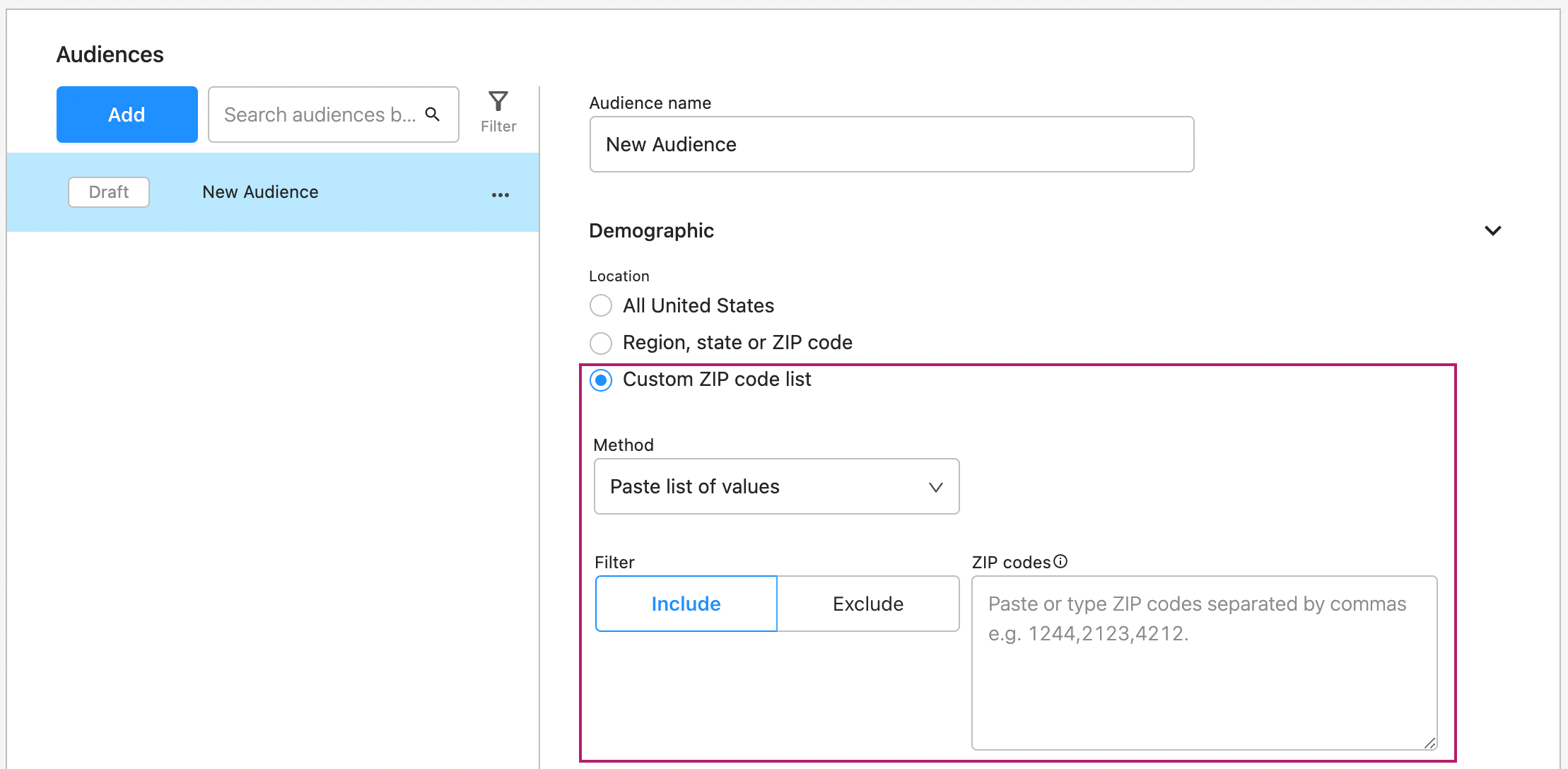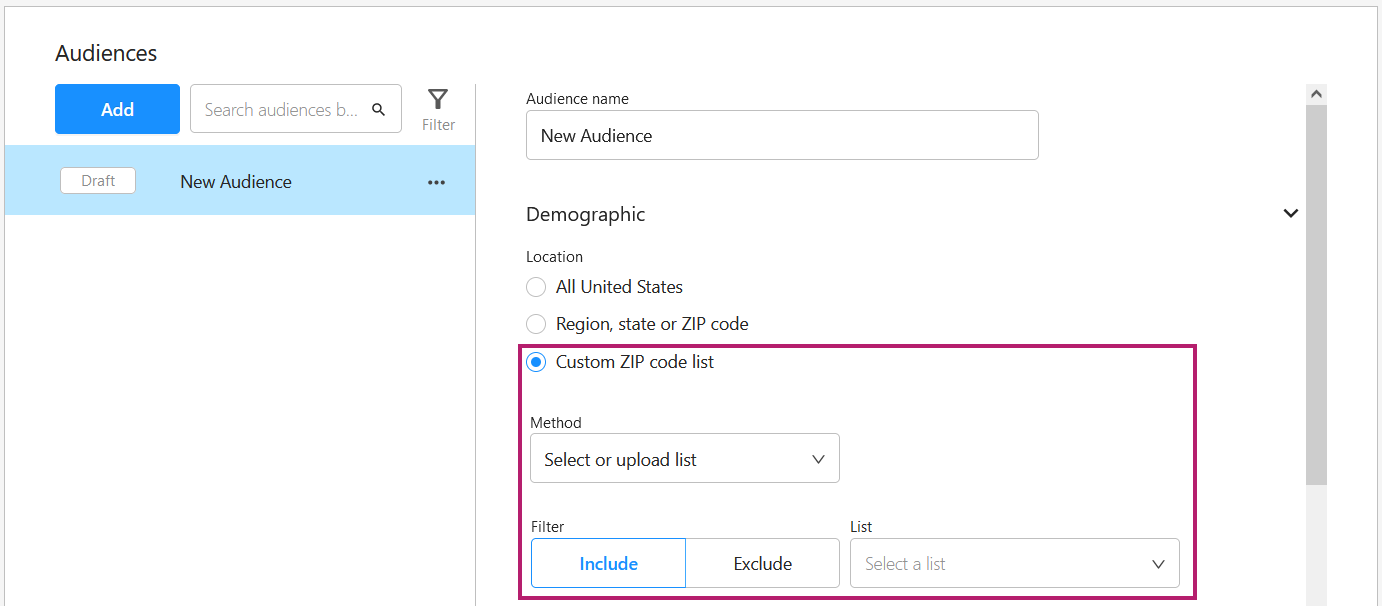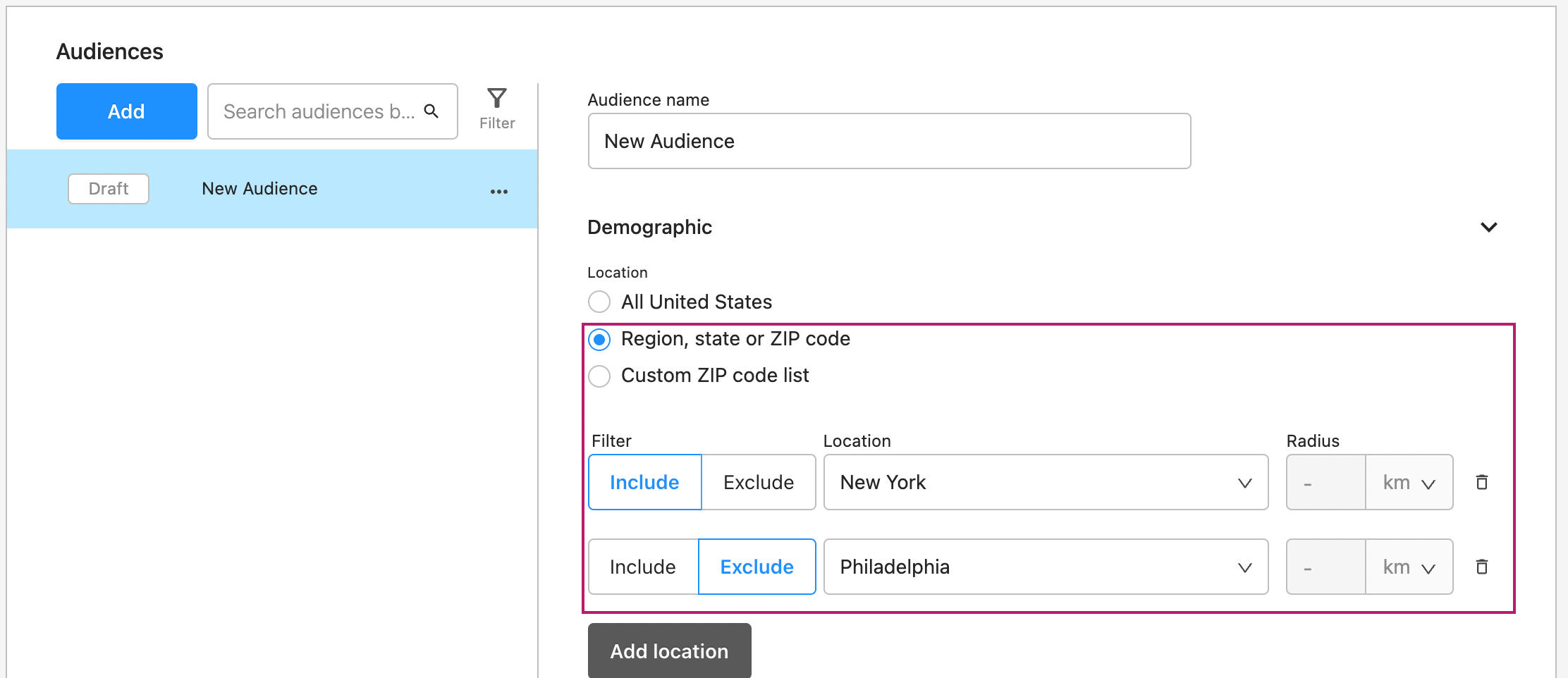Geo-targeting
Geo-targeting allows you to target or suppress customers based on their location.
How does Rokt determine a customer’s location?
We rely on postal code data as the basis for the location of a customer. Where our ecommerce partners have not provided Rokt with their customers’ postal codes, we instead use postal codes inferred from the IP address of the customer.
This means that if you use location targeting via the Region, State, or ZIP code option, or via uploading a Custom ZIP code list, your campaign will be eligible to reach customers on all Rokt transactions regardless of whether the ZIP/postal code was provided by our ecommerce partners or inferred from IP across all markets.
Geo-targeting options
All locations
By default, audiences are set to target all locations in the campaign’s country. To target more than one country, you need to set up separate campaigns.

Custom postal code list
Audiences can include or exclude a list of postal codes. It’s particularly useful for local businesses that operate in specific locations. You can upload lists of fewer than 1,000 postal codes directly in the audience creation wizard of One Platform. Enter a list of postal codes in the country-specific format, separated by commas.

You can upload lists with more than 1,000 entries using a CSV file, either in the audience creation wizard or by going to Customer Data > Custom Audiences. Such uploads create a custom audience postcode list that can be updated at any time and used across multiple audiences. You can read more about uploading a csv list here.

CSV files must contain postal codes in a valid format. For most countries, there is only one valid format. However, for the countries listed in the table below we accept a number of valid formats.
Valid postal code formats
| Country | Accepted Formats |
|---|---|
| Australia | 9999 |
| Austria | 9999 |
| Belgium | 9999 |
| Canada | A9A 9A9, A9A9A9, A9A |
| Denmark | 9999 |
| Finland | 99999 |
| France | 99999 |
| Germany | 99999 |
| India | 999999 |
| Ireland | A99 AAAA, A99AAAA, A99 |
| Italy | 99999 |
| Japan | 999-9999, 999 9999, 9999999 |
| Netherlands | 9999 AA, 9999AA, 9999 |
| New Zealand | 9999 |
| Norway | 9999 |
| Poland | 99-999, 99 999, 99999 |
| Portugal | 9999-999, 9999 999, 9999999 |
| Singapore | 999999, 99 |
| Spain | 99999 |
| Sweden | 999 99, 99999 |
| Switzerland | 9999 |
| United Kingdom | A9 9AA, A99AA, A9, AXX 9AA, AXX9AA, AXX, AA9X 9AA, AA9A9AA, AA9A |
| United States | 99999, 99999-9999, 99999 9999, 999999999 |
Key:
- A: Alphabet
- 9: Number
- X: Either alphabet or number
Region, state, ZIP
Regions, states, provinces, cities, and individual postal/ZIP codes can also be selected for targeting.

A combination of inclusion and exclusion rules can also be used. For example, a local business operating in New South Wales with a lack of inventory on the Penrith and Liverpool locations could include New South Wales, but exclude the two suburbs. For rules using postal codes, you can configure a radius to expand the territory around this location.
Since multiple rules can be added, below are examples of the results when two rules are at play:
| Rule 1 | Rule 2 | Result |
|---|---|---|
| Include New York | - | Target New York only |
| Exclude New York | - | Target all locations in the country except for New York |
| Include New York | Exclude Manhattan | Target New York except for Manhattan |
| Exclude New York | Include Manhattan | Target neither New York nor Manhattan |
| Include New York | Exclude Los Angeles | Target only New York |
| Exclude New York | Include Los Angeles | Target Los Angeles only |
If both exclude and include rules exist, the included postal codes (corresponding to the region, state, location of the rule) are added first and then the excluded postal codes are removed from them. So Manhattan is included and then New York is excluded, as Manhattan is located in New York, nothing remains and nothing will be targeted.
You cannot find full postal codes when using the Region, state, ZIP dropdown tool for Canada, Ireland, Netherlands, Singapore, the United Kingdom, or the United States. You can only find the short version of postal codes. This means that advertisers cannot target individual houses or streets in these countries, they may only target at the suburb level or higher.